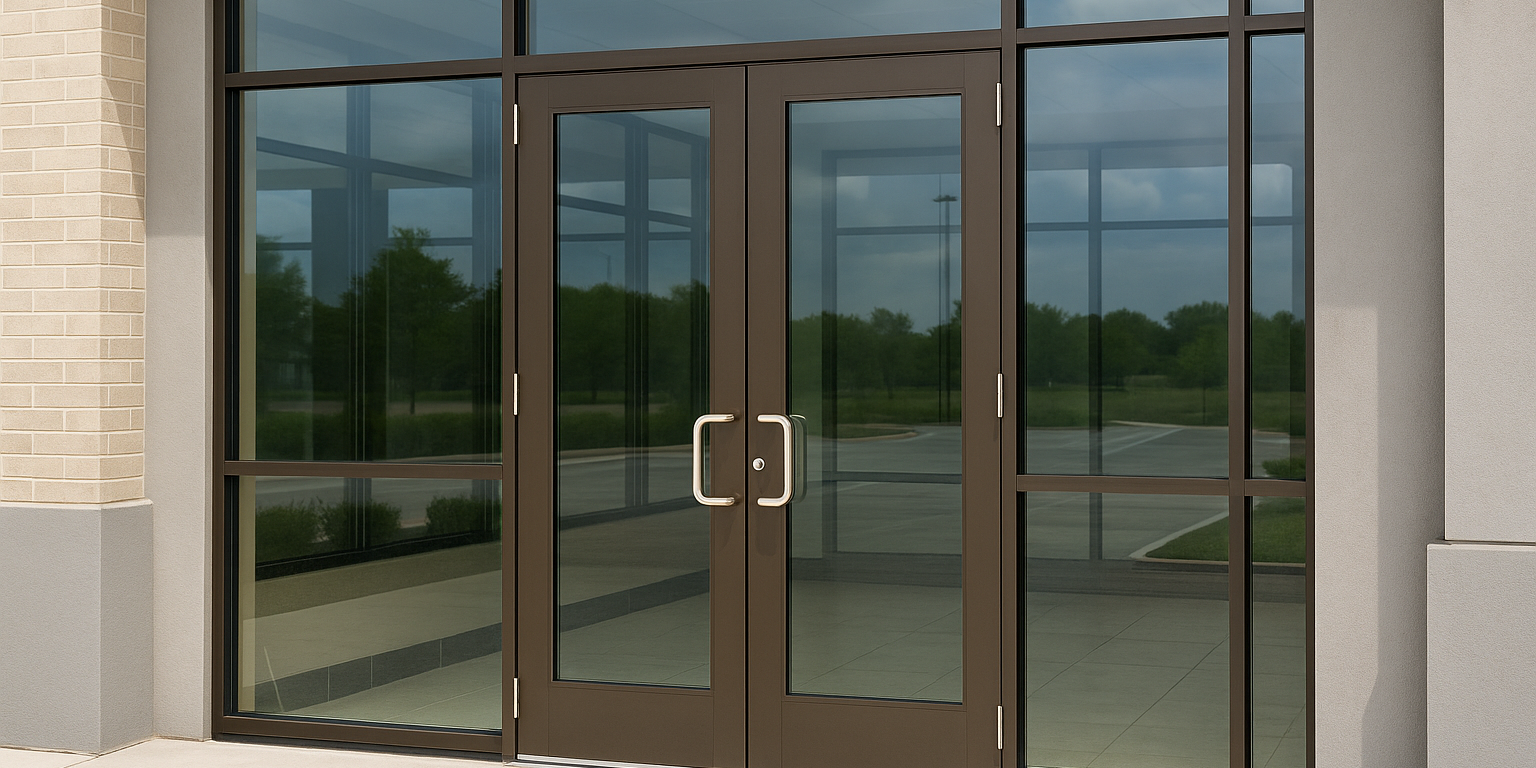Installing a storefront is one of the most important steps in commercial construction. It’s the face of the building—the first thing customers and clients see. But it’s also a high-performance system that has to seal, insulate, and protect.
Whether you’re managing a small retail build or a multi-tenant commercial project in Texas, Oklahoma, or across the Southern U.S., every general contractor needs a reliable plan. Here’s a step-by-step checklist to ensure a smooth, durable, and code-compliant storefront installation.
1. Confirm Dimensions and Site Conditions
Before anything goes up, verify that opening dimensions match your shop drawings and product specs. Check:
- Rough opening width and height
- Plumb and level conditions of framing
- Floor substrate type (concrete, wood, etc.)
- Wall material and anchoring requirements
Uneven conditions can throw off alignment, leading to costly adjustments later. Measure twice—install once.
2. Review Structural Requirements
Make sure your framing and anchor system meet structural loads for wind, traffic, and security. For hurricane-prone areas like coastal Louisiana or East Texas, impact-rated systems may be required.
Double-check:
- Anchor spacing
- Reinforcement needs for tall systems
- Compatibility with transoms and sidelites
3. Install Aluminum Framing System
Aluminum framing should be installed plumb, level, and square. Key steps include:
- Install sill flashing (if required)
- Anchor jambs and header first
- Assemble horizontals and verticals using shear blocks or screw-spline methods
- Seal joints with approved sealants
Use manufacturer-recommended fasteners and gaskets to maintain warranty and performance.
4. Set and Secure the Doors
Install doors after the frame is fully anchored. Check that hardware aligns correctly and that doors swing freely. For commercial use, test closers, panic devices, and locking systems for full function.
Also confirm:
- Hinge placement
- Threshold sealing
- ADA clearance and handle height
Poor alignment here can lead to air leaks, water infiltration, or premature wear.
5. Glaze with the Right Glass
Once the frame is secure, it’s time for glazing. The glass type depends on the project but often includes:
- Low-E insulated glass for energy savings
- Laminated safety glass for high-traffic or impact zones
- Tinted or reflective glass for style and solar control
Install glass using setting blocks, sealant, and snap-in beads per manufacturer instructions. Be sure to wear gloves and handle with care to prevent scratching or chipping.
6. Check Sealants and Weep Systems
Apply sealant to all joints and transitions—especially between frame and wall. Backer rods and tooling are essential for long-term durability.
If the system includes weep holes, make sure they are clear and functioning. These allow moisture to drain out and prevent water damage.
7. Perform Final Adjustments and Cleanup
Once everything is installed, do a walk-through and finalize:
- Adjust door closers and locks
- Clean glass and aluminum frames
- Seal exposed fasteners
- Confirm all labeling and safety specs are visible
Document installation with photos for your records and confirm all product warranties are activated.
8. Educate the Client on Care and Maintenance
Before handoff, give the building owner or tenant a basic rundown on cleaning procedures, hardware care, and recommended inspections. This small step can prevent costly repairs and maintain appearance.
Leave behind:
- Product warranty info
- Maintenance guides
- Contact for service or questions
Why Materials Matter
Even the best checklist can’t overcome poor materials. That’s why it’s important to work with a trusted supplier who understands the climate, codes, and construction demands of the Southern U.S.
At Sky Building Materials, we supply top-grade aluminum frames, door hardware, and glazing systems—all designed for high-performance storefronts. Our team is here to help you get the job done right, every time.
Build with Confidence
Storefront installation doesn’t have to be complicated. With a clear checklist and the right materials, general contractors can deliver sleek, functional, and energy-efficient entry systems that last.
Ready to start your next project? Visit Sky Building Materials to get expert support and product recommendations. You can also check out our latest updates and connect with other builders on Facebook.

